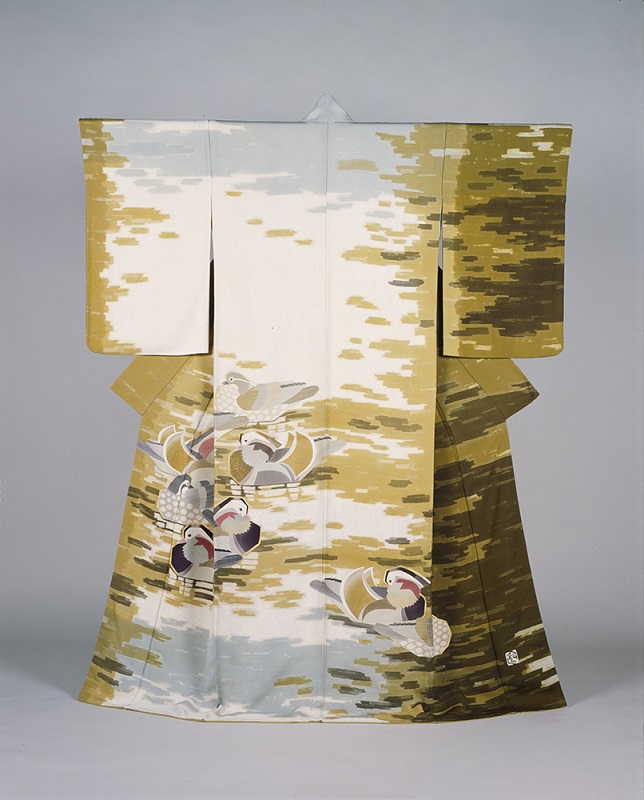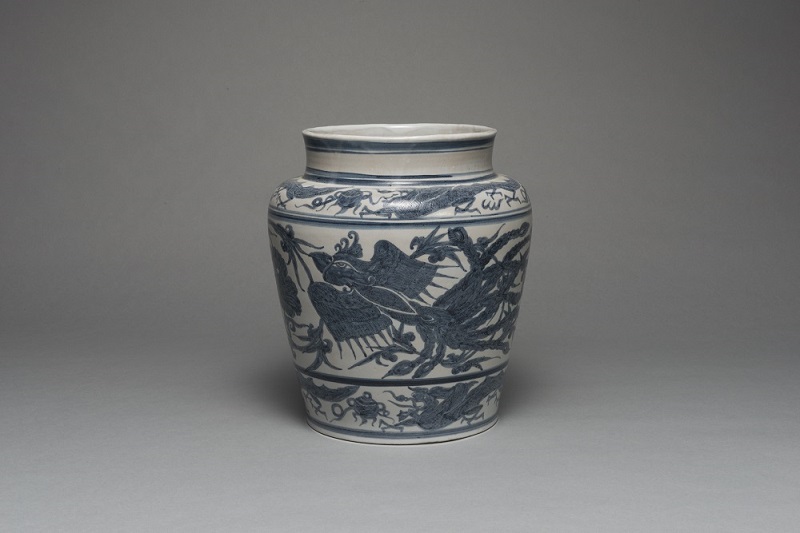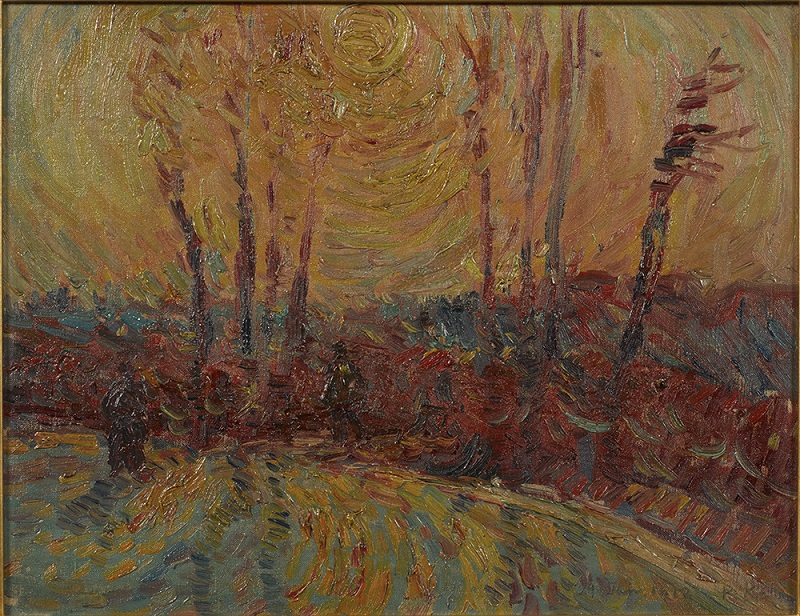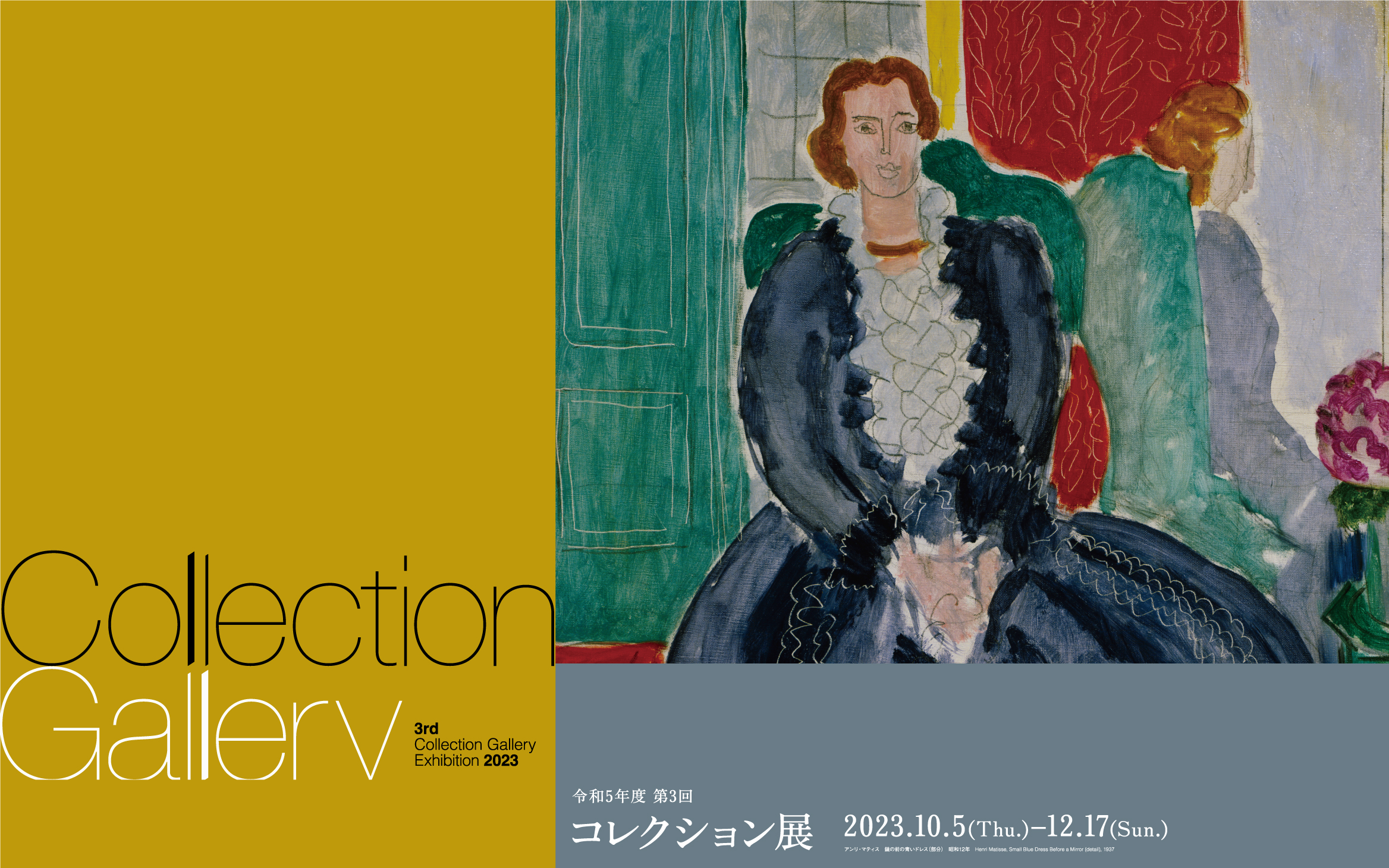
Collection Gallery
3rd Collection Gallery Exhibition 2023–2024
2023.10.05 thu. - 12.17 sun.
Selected Works of Western Modern Art Henri MATISSE, Small Blue Dress Before a Mirror, 1937
This section showcases outstanding works of modern Western art that belong to, or have been deposited in, the museum’s collection. In the current term we present works by Henri Matisse (1869-1954), who was much discussed this year due to the opening of the first major Matisse retrospective in Japan in approximately 20 years.
Matisse was a leading figure in Fauvism (derived from the French word fauve, meaning “wild beast”), a movement that advocated unbridled expression of artists’ subjective sensations through vibrant color. With his brilliant palette, striking color contrasts, and rendering of subjects with concise lines, Matisse is recognized as a giant of 20th-century art who produced numerous masterworks over the course of his life. The four works shown here all date from the 1920s and 1930s, an extraordinarily experimental and prolific period for the artist.
He painted The Cliffs at Étretat in 1920 during a stay of several weeks in the northern French seaside town of Étretat. The town is known for its sheer cliffs and unique rock formations shaped by the waves, which have been depicted by many painters including Gustave Courbet and Claude Monet. In this painting as well, a distinctive rock formation known as the Elephant’s Trunk is visible on the right end of a cliff. While the painting’s overall palette is dominated by shades of brown and gray, the skillfully contrasted interplay of light and shadow captures the gentle sunlight characteristic of northern France. During this period after Matisse moved his studio to Nice in 1918, he painted many relatively small-scale portraits and interiors, exploring new approaches to pictorial unity through tension and interaction among various compositional elements. This can be seen in Sylphide, a painting which, judging by the room’s layout and the wallpaper, evidently depicts his first studio in Nice. The woman posing in a flowing white skirt, reminiscent of the protagonist in the ballet La Sylphide, is Henriette Darricarère, who often modeled for Matisse around this time. While the scene appears to be a fleeting, casual moment, the meticulously calibrated color arrangement and composition results in a picture brimming with tension.
In the 1930s, Matisse transitioned from the more realistic style of the 1920s to an emphasis on decorative and planar aspects. In Small Blue Dress Before a Mirror, for which the blonde Russian woman Lydia Delectorskaya posed, while there are faint shadows on the dress, scarcely any elements conveying depth are evident, including in the depiction of the mirror behind the model. Instead, the striking visual impression is of flat areas of color applied with rapid brushstrokes, which are rhythmically arrayed to enhance the painting’s harmonious decorative effect. Even in the more realistic drawing Bulgarian Blouse, importance is placed less on realistic rendering of the subject through line than on a rhythmic decorative quality, generated by the embroidery on the blouse and cushion as well as the woman’s jewelry.
Small Blue Dress Before a Mirror has a strange and roundabout provenance. The work was first unveiled in 1938 at a Matisse exhibition held by the Parisian art dealer Paul Rosenberg, with whom Matisse had been in an exclusive contract since 1936. However, due to the Jewish ethnicity of Rosenberg, who also handled works by renowned modern artists such as Vincent van Gogh and Pablo Picasso, many works in his collection including this one were seized by the Nazis when they occupied Paris in June 1940. The works were first brought to the German embassy in Paris and then stored at the Galerie nationale du Jeu de Paume, which had become a repository for art looted by the Nazis. Of this trove of artworks, classicist paintings and masterworks that suited the Nazis’ reactionary cultural policies were transported to Germany. The rest, especially works that the Nazis deemed “degenerate art,” were used to barter with cooperative art dealers for works considered more desirable. Small Blue Dress Before a Mirror was traded to the German art dealer Gustav Rochlitz, who ran a business near Jeu de Paume, for a 17th-century Dutch painting in May 1942, and Matisse’s work was soon sold to a French art dealer, Paul Pétridès. After passing through the hands of several dealers after the war, the work returned to the possession of Paul Rosenberg and, after belonging to the prominent American art collector Norton Simon, was acquired by this museum in 1978. The story of this work’s journey sounds an alarm about the ways in which not only the economy, but also political ideologies can impact art and our freedom to create and appreciate it.
On The Kyoto Art World Comes of Age OKAMOTO Shinso, Spring Evening at Hanamikoji (unfinished), 1916
The works in the The Kyoto Art World Comes of Age: A New Generation Takes Over from Seiho and Shoen (now on view on the third floor), and this related exhibit consist not only of Nihonga (Japanese-style paintings) from the museum collection and deposited items, but also a selection of pieces from the National Museum of Modern Art, Tokyo. This was made possible with the cooperation of the National Center for Art Research, which was established earlier. Like the National Museum of Modern Art, Kyoto, the National Museum of Modern Art, Tokyo is part of the Independent Administrative Institution National Museum of Art.
In the first section, we present early works by the featured artists dating from their school age. Kyoto was the site of Japan’s first public art schools. The majority of Nihonga painters who were active during the Taisho (1912-1926) and Showa eras (1926-1989) were connected to the Kyoto City Technical School of Art or the Kyoto City Technical School of Painting. The exhibit provides us with a vivid glimpse into the youth of artists such as Okamoto Shinso, whose works are also presented on the third floor; Takehisa Yumeji, who exerted a strong influence on him; and Okamoto’s classmates Fukuda Heihachiro, Takaya Sengai, and Kimura Shiko. Also represented are Sakakibara Shiko, a senior classmate of Okamoto’s; Kainosho Tadaoto, who was also Okamoto’s senior but whom he had known for many years; and his younger classmates Inagaki Chusei and Yamaguchi Kayo. In April, the Kyoto City Technical School of Art’s successor, the Kyoto City Senior High School of Art (known until fiscal 2022 as Kyoto City Dohda Senior High School of Art) moved to a site on the north side of JR Kyoto Station followed in October by the Kyoto City Technical School of Painting’s successor, the Kyoto City University of Arts, putting them in very proximity to the museum. How might present-day students see these efforts by their predecessors?
In the second section, we focus on the mature works of the painters after they had blossomed into full-grown artists. Some of their most noteworthy works might be familiar to you from books or other exhibitions. Which seems more attractive, their early works on the third floor or these later pieces?
We hope you will enjoy both of these exhibitions.
Abstraction and Reality: Focus on the Photographs of Paul Strand Paul STRAND, Abstraction, Porch Shadows, Connecticut (original title: Photograph), 1915
In this exhibit, we focus primarily on the works of the American photographer Paul Strand, a strong proponent of Modernism in photography.
Born in New York in 1890, Strand began studying photography with Lewis Hine when he was 17. After visiting Alfred Stieglitz’s 291 Gallery on a class excursion, Strand set his sights on becoming a photographer. Hailed for “direct expressions of today,” he made his brilliant debut in the final issue of Camera Work, published in 1917, which was devoted exclusively to Strand’s work. In the 1930s, he was invited to visit Mexico by the nation’s government and travelled throughout the country, shooting pictures of churches and people’s daily lives. Strand’s “straight photography” is embodied by two aspects: abstracting his surroundings through the use of bold compositions and framing; and documenting the real world exactly as he saw it. His work occupies an important place in the history of modern photography.
MoMAK’s acquisitions of photographic works began in 1986 with the Kyocera Corporation’s gift of the Arnold Gilbert Collection, made up of 1,050 photographs. The collection was assembled by the Chicago couple Arnold and Temmie Gilbert between the late 1960s and the ’80s.
Distinguished by works with a historical overview, the collection includes a number of rare original prints, reflecting the close relationship between the Gilberts and legendary figures in modern American photography.
In addition to Paul Strand’s photographs, this exhibit features works by artists such as Hine and Stieglitz, who were associated with him.
Yuzen and Stencil Dyeing HATA Tokio, Kimono,"Floating Mandarin Ducks", 1961
Many of the works appearing in the exhibition The Kyoto Art World Comes of Age: A New Generation Takes Over from Seiho and Shoen feature people dressed in kimono. While it is difficult to judge with certainty, these kimono appear to be made with a range of techniques such as tie-dyeing, Yuzen, stencil dyeing, and kasuri-ori. The Japanese term for “textile arts,” senshoku, is composed of the words for “dyeing” and “weaving,” and the joy of viewing textile art stems in part from the field’s intimate connection between techniques and the resulting decorative effects. In this section we focus on Yuzen dyeing and stencil dyeing, presenting modern and contemporary textile works from our collection including kimono, wall hangings, and folding screens.
The term “Yuzen” is derived from Miyazaki Yuzen, a handheld fan painter active in Kyoto during the Edo Period (1603-1868). At first, his fan paintings gained popularity and influenced the designs of kosode (the kimono’s predecessor), and “Yuzen” initially referred to these stylish patterns. Over time, however, it became associated with the resist-dyeing technique used to create these patterns, leading to what we know today as Yuzen. The extraordinarily intricate workmanship that Yuzen dyeing enables can be seen in the works of Tabata Kihachi III, Kimura Uzan, and Moriguchi Kako. Meanwhile, stencil dyeing, which also became popular during the Edo Period, involves placing cut-out paper stencils over fabric, applying paste, and then adding color using dyes. While the use of stencils naturally imposes some limitations on artistic expression, the repetitive patterns they produce yield unique decorative effects. The works of Kamakura Yoshitaro and Suzuta Teruji show the charms of these repeating patterns, while artists such as Serizawa Keisuke and Inagaki Toshijiro developed stencil dyeing into a more pictorial art form and were recognized as Living National Treasures for their mastery of the kata-e-zome technique. Here we also feature works by Kasugai Hideo, Chudo Ken'ichi, and Naito Hideharu, who are or were active in the Nitten (Japan Fine Art Exhibition) and powerfully expanded the restrained dyeing effects of stencils into large pictorial formats.
Patterns of KAWAI Kanjiro KAWAI Kanjiro, Jar with Design of Flying Phoenix under the Flowers, Blue Underglaze, 1922
Here we present works by Kawai Kanjiro from the museum’s collection, with the theme of patterns. Kawai, a preeminent figure in modern Japanese ceramics, was born in what is now Yasugi, Shimane Prefecture in 1890. After graduating from Tokyo Higher Technical School (now Tokyo Institute of Technology), Kawai began working as a teacher at the Kyoto Municipal Ceramic Laboratory, where immersed himself in extensive research into glazes alongside his colleague Hamada Shoji. Kawai left the laboratory in 1917 and set out to be a ceramic artist, making a stunning debut in 1921 with his first solo exhibition of works inspired by Chinese and Korean ceramics, hailed as “the sudden appearance of a genius, like a comet in the heavens.” However, he subsequently shifted directions dramatically and became a key figure in the Mingei (folk art) movement, his production of pottery inextricably linked to everyday life. His works became ever more artistically ambitious in his later years, overflowing with the joy of life and being.
Showcased here are ceramics from throughout Kawai’s career adorned with patterns featuring people, animals, plants, and other motifs. Myriad techniques were employed in their creation, including three-color glazes, blue underglaze, running glaze, and other glazing techniques. In addition to hand-painting designs, he utilized various methods such as attaching molded parts to form reliefs, carving, inlaying, and resist dyeing. While the results ranged from patterns inspired by classical styles to those arising from free improvisation, all of them testify to Kawai’s encyclopedic knowledge and experience of ceramics. Kawai once remarked to the author and art collector Shirasu Masako, “As long as I’m having fun, that’s all that matters,” and in addition to his mastery, his works convey an image of his plunging into creation with childlike innocence.
Individualists in Japanese Western-style Painting of the Taisho Era KISHIDA Ryusei, Sunset, 1912
As a designation for one emperor’s rule, the Taisho era began in 1912 and ended in 1926. However, in the context of modern Japanese art history, the Taisho era is generally regarded as starting around 1910, near the close of the Meiji era (1868-1912), and lasting anywhere from until 1923 (the year of the Great Kanto Earthquake) to as late as the early 1930s, at the dawn of the Showa era (1926-1989). The first half of this brief period saw the introduction of Impressionism and Post-Impressionism from the West. Notably, awareness of the tempestuous life story of Vincent van Gogh and the lucid artistic principles of Paul Cezanne led to challenges to the dominant academicist style of the Tokyo Fine Arts School, which had incorporate Impressionist plein-air techniques in a somewhat half-baked manner. These challenges were spearheaded by individualistic artists who opposed staid conventions. In the latter half of the period, these trailblazers’ successors intensified their activities, advocating Futurism, Abstractionism, and Surrealism and setting the stage for art movements of the Showa era post-1930.
Artists of the Taisho era often described as “individualists,” such as Kishida Ryusei, Yorozu Tetsugoro, and Koide Narashige, were known for having tragically short lives, with their periods of activity aligning almost precisely with the Taisho era in art history. It can be said that their contributions defined the characteristics and guided the arc of Taisho-era art. By contrast, artists like Sakamoto Hanjiro lived long enough to reevaluate and deepen their individualism as Taisho gave way to Showa, while distancing themselves from tumultuous upheaval in the art world.
Here, we present works by artists termed Taisho individualists. Alongside preeminent figures such as Kishida Ryusei, Yorozu Tetsugoro, and Koide Narashige, we are also pleased to showcase works by the long-lived Sakamoto Hanjiro as well as Koga Harue, who took his art in innovative directions during the Showa era.
Educational Studies 04: Locus of a Butterfly: HASEGAWA Saburo's Illusion Educational Studies 04-1(Photo: Nobutada Omote) ducational Studies 04-2(Photo: Nobutada Omote) Educational Studies 04-3(Photo: Nobutada Omote) Educational Studies 04-4(Photo: Nobutada Omote)
At the National Museum of Modern Art, Kyoto, we are re-examining the conventional vision-centric approach to art appreciation through the initiative “Opening the Senses – Project to Promote Innovative Art Appreciation Programs,” which aims to enable all people to enjoy art and discover and share new dimensions of artworks using a range of senses such as touch and hearing. In fiscal 2020 we launched the ABC Project, with “ABC” standing for “the Artist, the Blind, and the Curator,” who collaborate to leverage their expertise, sensibilities and experience in developing unique appreciation programs for the works in our collection. Now, we are delighted to present the third installment of this series, titled Locus of a Butterfly: Hasegawa Saburo’s Illusion.
Hasegawa Saburo produced the abstract painting Locus of a Butterfly in 1937. The picture is composed of a figure-eight, ellipses, dots, and rough brushstrokes, with no obvious connection to the path of a butterfly’s flight. However, an unmistakable sense of something having been in motion emanates from the painting. How can we communicate to one another the sensations, akin to invisible presences, that we derive from abstract paintings like this one?
For this project, the trio of Nakamura Yuta (A), Yasuhara Rie (B), and Matsuyama Saki (C) worked together to express Hasegawa’s brushstrokes linguistically, using canvases of the same size as the original work. They cross-referenced various exhibition catalogues and magazines, and also examined the flight patterns of butterflies from an animal-behavior perspective. Then, they combined materials such as clay, rope, and beans to create evocative tactile images* of Locus of a Butterfly that spark the imagination when touched.
This exhibition features 14 tactile images, each interpreting Hasegawa’s pictorial ideation, derived from the three collaborators’ discussions and actions surrounding Locus of a Butterfly. Visitors to the gallery are invited to see, hear, and touch these tactile images, exploring novel ways to appreciate abstract art.
In conjunction with the physical exhibition, we also present the website “ABC Collection Database Vol. 3: Hasegawa Saburo’s Illusion,” which delves into Locus of a Butterfly through words, documents, butterfly behavior, and tactile imagery.
*A tactile image is an image that transforms and adapts the composition, colors, and other aspects of a work of art into tactile data.
Supported by the Agency for Cultural Affairs, Government of Japan in the fiscal 2023
Special thanks to: KONAN GAKUEN Saburo Hasegawa Memorial Gallery
“Dear MoMAK”: Let’s Celebrate the 60th Anniversary of the National Museum of Modern Art, Kyoto
This year, the National Museum of Modern Art, Kyoto (MoMAK) celebrates the 60th of its opening. What sorts of stories have emerged from relationships between visitors and the museum over the past six decades? Taking a look back at the history of MoMAK, we are currently asking people to share their memories of past exhibitions and events, as well as anecdotes related to memorable artworks and artists. Every day we have been receiving responses such as “I recall being overwhelmed by the power of the work,” “I felt close to the history [of the work] because it was made the same year that my grandfather was born,” or “I’ll never forget the dessert inspired by the art that I enjoyed at the museum restaurant.”
In a section of the permanent collection galleries, people’s written memories that connect to works and artists in our collection, selected by museum staff, are presented alongside the works themselves. We hope that as you enjoy your time at the museum, you will contemplate the many bonds that form between individual visitors and works of art.
“Dear MoMAK” welcomes everyone to participate, as many times as they like. On the occasion of our 60th anniversary, why not put down your own special memories on paper?
Exhibition Period
2023.10.5 thu. - 12.17 sun.
[First term]
10.5 thu.~11.12 sun.
[Second term]
11.14 tue.~12.17 sun.
Themes of Exhibition
Selected Works of Western Modern Art
On The Kyoto Art World Comes of Age
Abstraction and Reality: Focus on the Photographs of Paul Strand
Yuzen and Stencil Dyeing
Patterns of KAWAI Kanjiro
Individualists in Japanese Western-style Painting of the Taisho Era
Educational Studies 04: Locus of a Butterfly: HASEGAWA Saburo's Illusion
“Dear MoMAK”: Let’s Celebrate the 60th Anniversary of the National Museum of Modern Art, Kyoto
[Outside] Outdoor Sculptures
List of Works
3rd Collection Gallery Exhibition 2023-2024(186 works in all)(PDF)
Free Audio Guide App
How to use Free Audio Guide (PDF)
Hours
10:00 AM – 6:00 PM
*Fridays: 10:00 AM – 8:00 PM
*Admission until 30 min before closing.
Admission
Adult: 430 yen (220 yen)
University students: 130 yen (70 yen)
High school students or younger,seniors (65 and over): Free
*Figures in parentheses are for groups of 20 or more.
*This ticket is only available at Collection Gallery.
Collection Gallery Free Admission Days
October 7, November 3, 18,19, December 16, 23, 2023
Free Audio Guide App How to use Free Audio Guide (PDF)



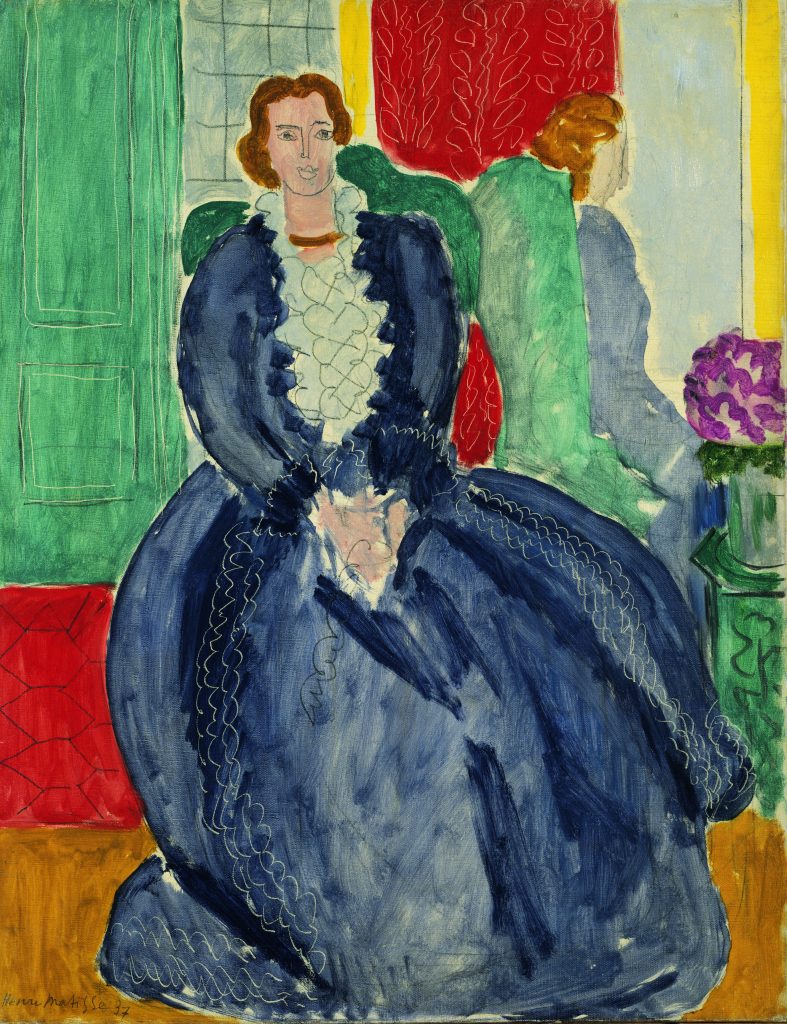
》1916年-1008x1024.jpg)
》1915年-705x1024.jpg)
